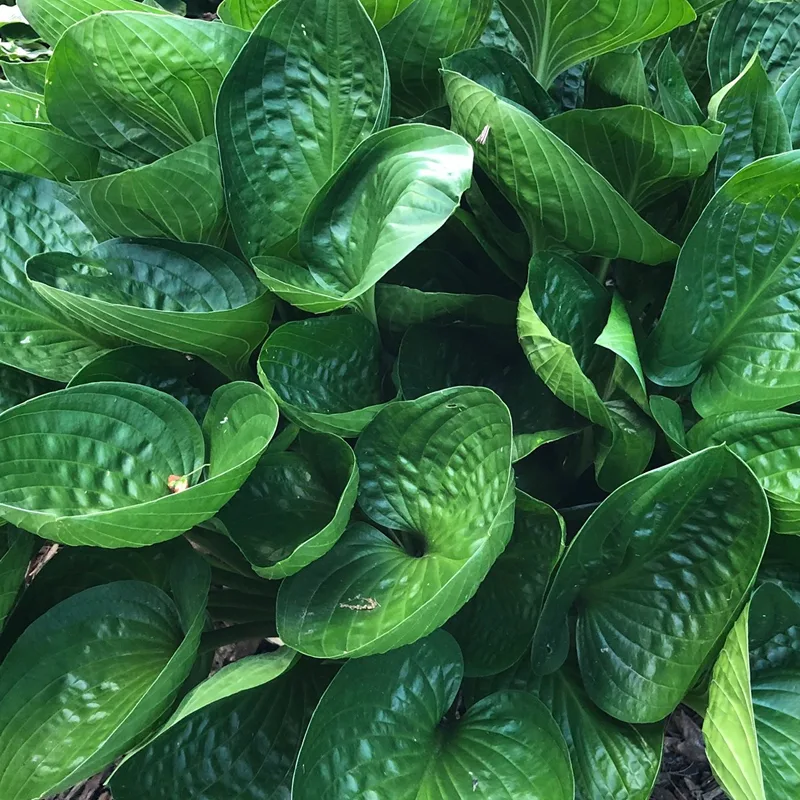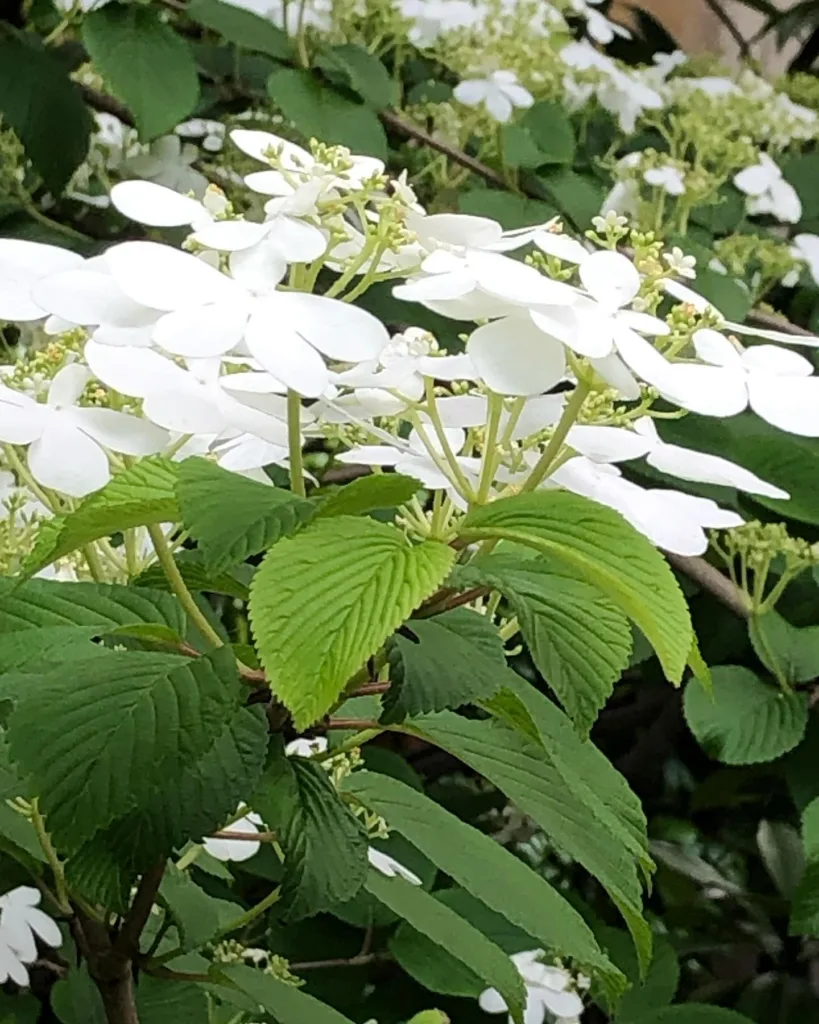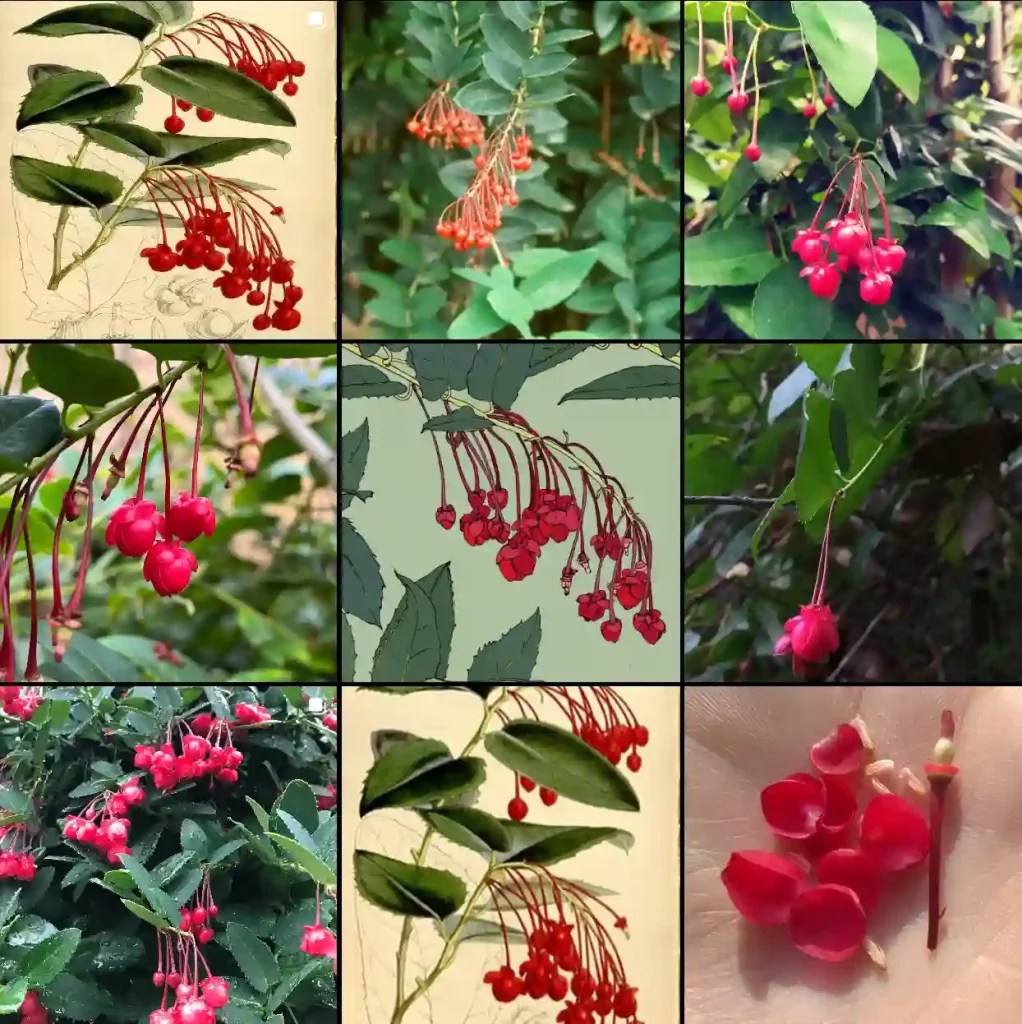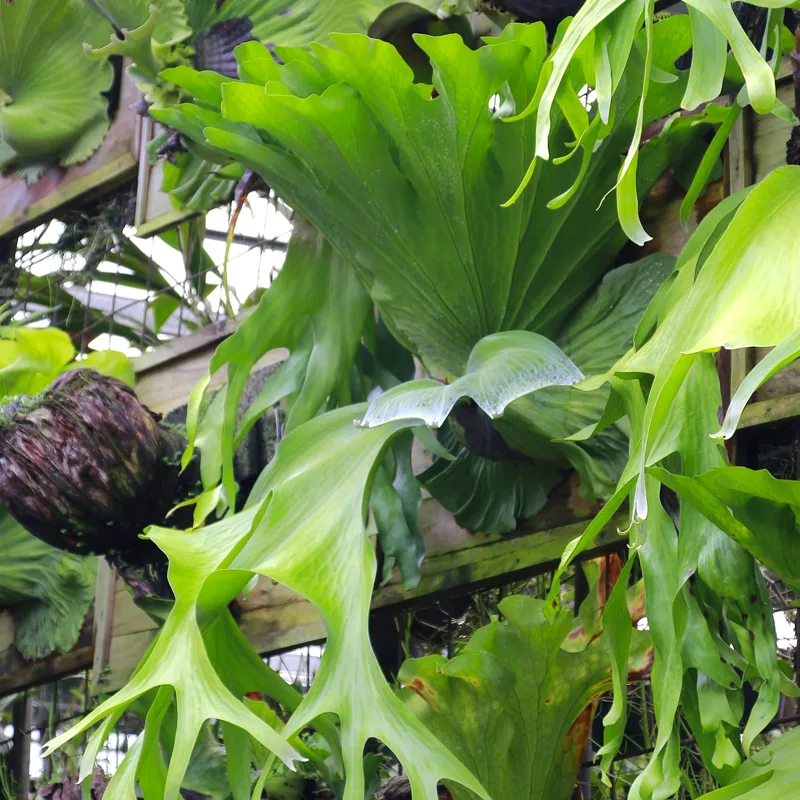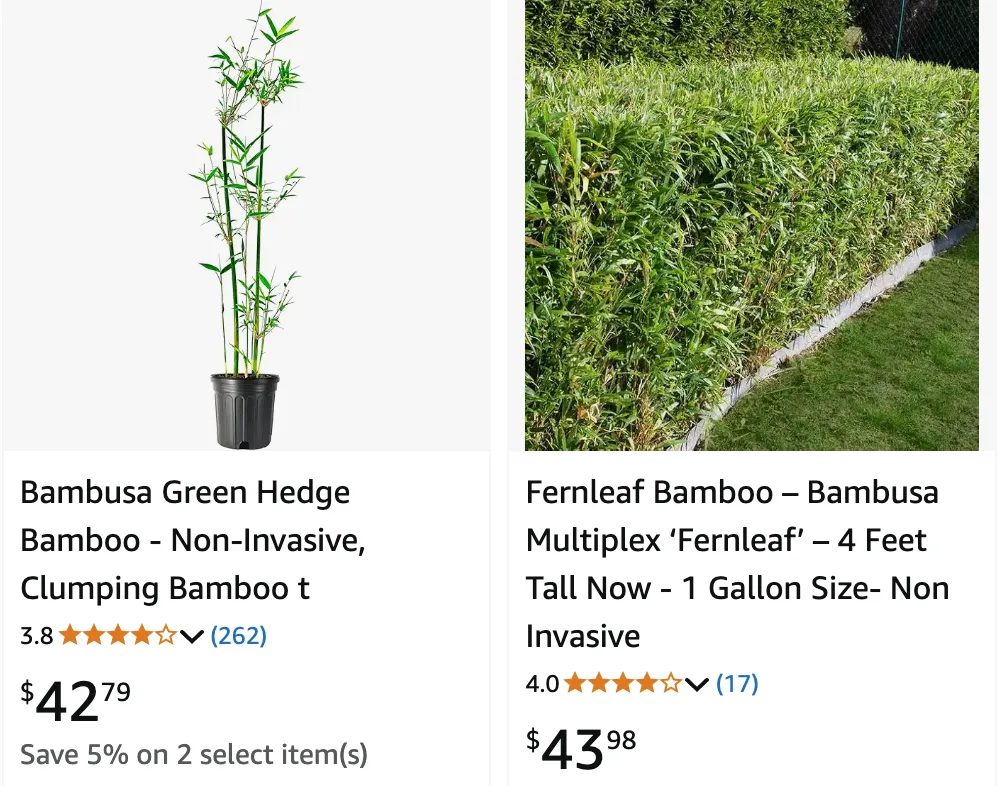
May 13 – Bambusa
"Bambusa, the bamboo, represents May 13."
Bamboo symbolizes strength and flexibility. You have a resilient and adaptable spirit, bending but never breaking under pressure. Like bamboo, you grow tall and steady through life’s challenges.
The Mighty Bambusa: A Personal Exploration of Bamboo
My name is Ferb Vu, and like many people, I’ve always been fascinated by bamboo. It’s a plant that seems to embody strength and resilience, yet it’s also incredibly graceful and versatile. But beyond its aesthetic appeal, I discovered that bamboo, specifically the genus Bambusa, is a treasure trove of biodiversity with a rich history and a promising future.
What is Bambusa?
Bambusa is a genus of clumping bamboo belonging to the Poaceae family, the grass family. Native to tropical and subtropical regions of Asia, it thrives in diverse environments, from humid rainforests to drier mountainous areas. This adaptability is a testament to its hardiness and explains why it has been an integral part of various cultures for centuries.
What distinguishes Bambusa from other bamboo genera? Firstly, it’s generally characterized by its large size. These aren’t your delicate, ornamental bamboos. Bambusa species can reach towering heights, with some exceeding 20 meters. Secondly, they often have multiple branches at a single node, unlike many other bamboos which typically have only one. And finally, they possess one or two noticeably larger internodes (the segments between the nodes on the culm), a distinctive feature that sets them apart.
FAQs
What color is bamboo?
Bamboo is a vibrant green, especially in the early stages of growth, but as it ages, it can develop yellowish hues or even turn a golden brown.
Why is my bamboo stalk turning yellow in water?
I noticed my bamboo stalk turning yellow in water when I forgot to change the water for too long; the stagnant water seemed to stress the plant.
Can dogs eat bamboo?
I’ve seen my dog nibble on bamboo leaves without any ill effects, and after some research, I found that it’s generally safe for dogs.
Do koalas eat bamboo?
Koalas don’t eat bamboo; they are eucalyptus enthusiasts, sticking to their native diet which I’ve always thought is quite fascinating.
Can cats eat bamboo?
My cat occasionally chews on the bamboo plants at home, and thankfully, bamboo is non-toxic to cats, so I don’t worry about it harming her.
Can goats eat bamboo?
I once fed some bamboo leaves to a friend’s goats, and they seemed to enjoy it, munching away happily.
Do deer eat bamboo?
Deer frequently visit my yard and they seem to enjoy munching on the tender shoots of my bamboo, often leaving it looking quite sparse.
Do termites eat bamboo?
I’ve observed that termites are quite fond of bamboo, and they can cause significant damage if the bamboo is untreated.
Can rabbits eat bamboo?
I’ve given my rabbit bamboo leaves as a treat, and he seems to love it, munching away enthusiastically.
Can horses eat bamboo?
While visiting a farm, I noticed horses eating bamboo without any issues, seemingly enjoying the crunchiness of the stalks.
Does bamboo burn?
I found out that bamboo burns very well when dry, making it a surprisingly efficient source of fuel for my campfire.
What do bamboo shoots taste like?
Bamboo shoots, in my experience, have a mild, slightly sweet flavor and a crunchy texture that adds a nice touch to stir-fries.
How to make flute from bamboo?
Making a bamboo flute is a satisfying project; I carefully selected a straight, dry bamboo stalk, cut it to length, and drilled finger holes to create a simple, melodic instrument.
What is bamboo used for?
I’ve used bamboo for a variety of projects, from building a garden trellis to crafting utensils, and its versatility never ceases to amaze me.
Is bamboo stronger than steel?
Bamboo is impressively strong and flexible; when I built a lightweight fence with it, I was amazed at its resilience compared to more rigid materials like steel.
What is a bamboo massage?
I tried a bamboo massage once, and the warm bamboo sticks felt incredible, easing muscle tension in a way that traditional massages couldn’t.
Is bamboo native to North America?
Bamboo isn’t native to North America, but I’ve seen it thrive in my garden with a little extra care, proving how adaptable it can be.
Are bamboo brushes good for your hair?
Switching to a bamboo hairbrush has been great for my hair; it feels gentler and I’ve noticed less breakage compared to plastic brushes.
Are bamboo cutting boards safe?
I use bamboo cutting boards regularly because they’re durable and naturally resistant to bacteria, making them a safe choice in my kitchen.
Are bamboo sheets good for your skin?
Sleeping on bamboo sheets has been a game-changer for me; they are incredibly soft and breathable, keeping my skin cool and comfortable all night.
Can bamboo survive winter?
My outdoor bamboo plant survived the winter with some mulching and protection, proving its resilience even in colder climates.
Does bamboo have seeds?
I’ve rarely seen bamboo seeds, as they don’t produce them often; instead, bamboo typically spreads through its roots.
Does bamboo rot?
Bamboo can rot if it’s constantly exposed to water, which I found out the hard way when part of my bamboo fence deteriorated after a particularly rainy season.
Does bamboo shrink?
I noticed that bamboo shrinks slightly when it dries out, which is something to consider when using it for construction projects.
Is bamboo considered wood?
Although bamboo is often thought of as wood, it’s actually a type of grass, but its strength and versatility make it comparable to wood in many uses.
Is bamboo dishwasher safe?
I learned that bamboo items aren’t dishwasher safe after a cutting board warped and cracked in the high heat of my dishwasher.
Is bamboo sugar cane?
Bamboo isn’t the same as sugar cane, although they look similar; sugar cane is much juicier and sweeter, while bamboo is more fibrous.
What does bamboo smell like?
Bamboo has a fresh, earthy smell that I find quite pleasant, especially when it’s freshly cut.
Are bamboo chopsticks reusable?
I prefer bamboo chopsticks because they’re durable and reusable, making them a more eco-friendly option compared to disposable ones.
Are bamboo toothbrushes good?
Using a bamboo toothbrush feels just as effective as a plastic one, with the added benefit of being more environmentally friendly.
Can bamboo be stained?
Staining bamboo is a straightforward process; I’ve stained bamboo furniture to match my decor, and it took the color beautifully.
Diving Deep into Bambusa Diversity
The genus Bambusa boasts a remarkable array of species, each with its own unique characteristics and uses. Here are:
- Bambusa affinis Munro
- Bambusa albolineata L.C.Chia
- Bambusa alemtemshii H.B.Naithani
- Bambusa amplexicaulis W.T.Lin & Z.M.Wu
- Bambusa angustiaurita W.T.Lin
- Bambusa angustissima L.C.Chia & H.L.Fung
- Bambusa arnhemica F.Muell.
- Bambusa assamica Barooah & Borthakur
- Bambusa aurinuda McClure
- Bambusa australis L.C.Chia & H.L.Fung
- Bambusa balcooa Roxb.
- Bambusa bambos (L.) Voss
- Bambusa barpatharica Borthakur & Barooah
- Bambusa basihirsuta McClure
- Bambusa basihirsutoides N.H.Xia
- Bambusa basisolida W.T.Lin
- Bambusa beecheyana Munro
- Bambusa bicicatricata (W.T.Lin) L.C.Chia & H.L.Fung
- Bambusa binghamii Gamble
- Bambusa boniopsis McClure
- Bambusa brevispicula Holttum
- Bambusa brunneoaciculia G.A.Fu
- Bambusa burmanica Gamble
- Bambusa cacharensis R.B.Majumdar
- Bambusa cerosissima McClure
- Bambusa chungii McClure
- Bambusa chunii L.C.Chia & H.L.Fung
- Bambusa clavata Stapleton
- Bambusa comillensis Alam
- Bambusa concava W.T.Lin
- Bambusa contracta L.C.Chia & H.L.Fung
- Bambusa copelandii Gamble
- Bambusa corniculata L.C.Chia & H.L.Fung
- Bambusa cornigera McClure
- Bambusa crispiaurita W.T.Lin & Z.M.Wu
- Bambusa dahuazhu T.P.Yi & B.X.Li
- Bambusa dampaeana H.B.Naithani, Garbyal & N.S.Bisht
- Bambusa daporijoeana H.B.Naithani & Kandwal
- Bambusa deformis T.P.Yi & Lin Yang
- Bambusa diaoluoshanensis L.C.Chia & H.L.Fung
- Bambusa dissimulator McClure
- Bambusa distegia (Keng & Keng f.) L.C.Chia & H.L.Fung
- Bambusa dolichoclada Hayata
- Bambusa duriuscula W.T.Lin
- Bambusa emeiensis L.C.Chia & H.L.Fung
- Bambusa eutuldoides McClure
- Bambusa excurrensa G.A.Fu
- Bambusa farinacea K.M.Wong
- Bambusa fimbriligulata McClure
- Bambusa flexuosa Munro
- Bambusa fruticosa Holttum
- Bambusa funghomii McClure
- Bambusa garuchokua Barooah & Borthakur
- Bambusa gibba McClure
- Bambusa gibboides W.T.Lin
- Bambusa glabrovagina G.A.Fu
- Bambusa glaucophylla Widjaja
- Bambusa grandis (Q.H.Dai & X.L.Tao) Ohrnb.
- Bambusa griffithiana Munro
- Bambusa guangxiensis L.C.Chia & H.L.Fung
- Bambusa gurgandii K.M.Wong & Diep
- Bambusa hainanensis L.C.Chia & H.L.Fung
- Bambusa heterostachya (Munro) Holttum
- Bambusa hirticaulis R.S.Lin
- Bambusa indigena L.C.Chia & H.L.Fung
- Bambusa insularis L.C.Chia & H.L.Fung
- Bambusa intermedia Hsueh f. & T.P.Yi
- Bambusa jacobsii Widjaja
- Bambusa jaintiana R.B.Majumdar
- Bambusa khasiana Munro
- Bambusa kingiana Gamble
- Bambusa kyathaungtu E.G.Camus
- Bambusa lako Widjaja
- Bambusa lapidea McClure
- Bambusa latideltata W.T.Lin
- Bambusa laxa K.M.Wong
- Bambusa lenta L.C.Chia
- Bambusa lituiformis W.Arthan, Teerawat. & Sungkaew
- Bambusa longipalea W.T.Lin
- Bambusa longispiculata Gamble
- Bambusa macrolemma Holttum
- Bambusa macrotis L.C.Chia & H.L.Fung
- Bambusa maculata Widjaja
- Bambusa majumdarii P.Kumari & P.Singh
- Bambusa malingensis McClure
- Bambusa manipureana H.B.Naithani & N.S.Bisht
- Bambusa marginata Munro
- Bambusa merrillii Gamble
- Bambusa mizorameana H.B.Naithani
- Bambusa mohanramii P.Kumari & P.Singh
- Bambusa mollis L.C.Chia & H.L.Fung
- Bambusa mompana H.B.Naithani
- Bambusa multiplex (Lour.) Raeusch. ex Schult.f. Plant FAQs: Bambusa Multiplex
- Bambusa mutabilis McClure
- Bambusa nagalandiana H.B.Naithani
- Bambusa nairiana P.Kumari & P.Singh
- Bambusa nepalensis Stapleton
- Bambusa nghiana V.T.Tran
- Bambusa nutans Wall. ex Munro
- Bambusa odashimae Hatus. ex Ohrnb.
- Bambusa oldhamii Munro Plant FAQs: Bambusa Oldhamii
- Bambusa oliveriana Gamble
- Bambusa ooh Widjaja & Astuti
- Bambusa pachinensis Hayata
- Bambusa pallida Munro
- Bambusa papillata (Q.H.Dai) K.M.Lan
- Bambusa papillatoides Q.H.Dai & D.Y.Huang
- Bambusa pervariabilis McClure
- Bambusa pierreana E.G.Camus
- Bambusa piscatorum McClure
- Bambusa polymorpha Munro
- Bambusa procera A.Chev. & A.Camus
- Bambusa prominens H.L.Fung & C.Y.Sia
- Bambusa purpurovagian G.A.Fu
- Bambusa ramispinosa L.C.Chia & H.L.Fung
- Bambusa rangaensis Borthakur & Barooah
- Bambusa rectocuneata (W.T.Lin) N.H.Xia, R.S.Lin & R.H.Wang
- Bambusa remotiflora (Kuntze) L.C.Chia & H.L.Fung
- Bambusa riauensis Widjaja
- Bambusa rigida Keng & Keng f.
- Bambusa riparia Holttum
- Bambusa rongchengensis (T.P.Yi & C.Y.Sia) D.Z.Li
- Bambusa rugata (W.T.Lin) Ohrnb.
- Bambusa rutila McClure
- Bambusa salarkhanii Alam
- Bambusa semitecta W.T.Lin & Z.M.Wu
- Bambusa sesquiflora (McClure) L.C.Chia & H.L.Fung
- Bambusa sinospinosa McClure
- Bambusa solida Munro ex Becc.
- Bambusa solomonensis Holttum
- Bambusa spinosa Roxb.
- Bambusa stenoaurita (W.T.Lin) T.H.Wen
- Bambusa striatomaculata G.A.Fu
- Bambusa subaequalis H.L.Fung & C.Y.Sia
- Bambusa subtruncata L.C.Chia & H.L.Fung
- Bambusa surrecta (Q.H.Dai) Q.H.Dai
- Bambusa tabacaria (Lour.) Steud.
- Bambusa teres Buch.-Ham. ex Munro
- Bambusa textilis McClure
- Bambusa transvenula (W.T.Lin & Z.J.Feng) N.H.Xia
- Bambusa truncata B.M.Yang
- Bambusa tsangii McClure
- Bambusa tulda Roxb.
- Bambusa tuldoides Munro
- Bambusa utilis W.C.Lin
- Bambusa valida (Q.H.Dai) W.T.Lin
- Bambusa variostriata (W.T.Lin) L.C.Chia & H.L.Fung
- Bambusa ventricosa McClure
- Bambusa villosula Kurz
- Bambusa vinhphuensis T.Q.Nguyen
- Bambusa viridis Widjaja
- Bambusa vulgaris Schrad. ex J.C.Wendl. Plant FAQs: Bambusa Vulgaris – Common Bamboo
- Bambusa wenchouensis (T.H.Wen) Keng f. ex Q.F.Zheng, Y.M.Lin
- Bambusa xiashanensis L.C.Chia & H.L.Fung
- Bambusa xueana Ohrnb.
- Bambusa xueliniana R.S.Lin & C.H.Zheng
The Significance of Bambusa
Bambusa has played a pivotal role in human societies for millennia. Its uses are incredibly diverse, spanning from the practical to the artistic.
- Construction: The strong culms of many Bambusa species are ideal for building houses, bridges, scaffolding, and even boats.
- Food: Young bamboo shoots of certain species are edible and are a popular ingredient in Asian cuisine.
- Medicine: Traditional medicine utilizes various parts of Bambusa plants for their potential health benefits.
- Crafts: Bamboo is woven into baskets, mats, hats, and numerous other handcrafted items.
- Music: Bamboo is used to create musical instruments like flutes and xylophones.
- Ornamentation: Many Bambusa species are cultivated for their ornamental value in gardens and landscapes.
Beyond its practical applications, Bambusa holds cultural and symbolic significance in many societies. It often represents strength, flexibility, and resilience. In some cultures, it’s associated with longevity and prosperity.
Facing the Future with Bambusa
In a world grappling with climate change, Bambusa presents itself as a sustainable resource with immense potential. It’s a fast-growing plant that sequesters carbon dioxide effectively, making it an ally in the fight against global warming. Moreover, its versatility and renewability make it an attractive alternative to traditional materials in various industries.
However, it’s crucial to ensure that the utilization of Bambusa is sustainable and responsible. Overharvesting and habitat destruction can threaten the biodiversity of this valuable genus. Therefore, conservation efforts and sustainable management practices are essential to ensure that Bambusa continues to thrive and benefit future generations.
As I continue to learn more about Bambusa, I’m increasingly impressed by its adaptability, versatility, and ecological importance. This remarkable genus holds a significant place in our world, and I believe it has a crucial role to play in a sustainable future.
